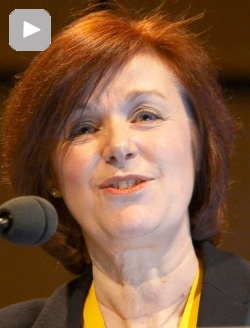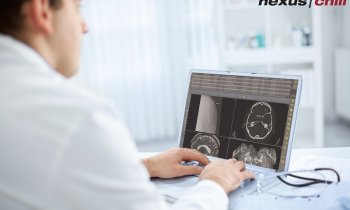IT and Workflow
How speech recognition speeds up reporting
How can speech recognition become a workflow improver instead of a road to frustration? Kaye Bonython, Programme Manager, Imaging Informatics & OSL, HCA’s Portland Hospital for Women and Children, really knows: She has driven a series of PACS-related enhancements in HCA organisation, including group-wide speech recognition reporting – that was in 2006. Now, 99.98 per cent of reports at HCA are created with speech recognition.

“The key driver to implement speech recognition was to speed up the turnaround and support for radiology images. Being a private group, even before this we had quite good turnaround times for radiology reports but with the advances PACS offered the radiologists wanted to be even quicker, and so did the referring physicians.
However, the decision to offer speech recognition received considerably negative responses. “We only heard horror stories from sites already using such a system and where people were uncomfortable with it and did not use it. In many cases, the integration of routing report – getting them to the right place – was not as good as it should be. We thought the only way to offer something to our users was by trial and error.
Research followed and several firms were invited to join in a pilot project to assess the most appropriate speech recognition equipment and the best way to work with the chosen manufacturer on its integration. The investigation took eight months, which was, she noted, “not very popular with my management”. However, she remained convinced that, following implementation, work would speed up and become more effective, which, she said, is exactly what happened. “Finally we decided to use MagicSpeech Recognition from Nuance. As a result, the roll-out took half the time we had anticipated.”
The radiologists are strongly encouraged to work with speech recognition. “MagicSpeech offers them three choices”, Bonython pointed out. “They can choose completely digital records, which we do not encourage; or a recognition mode where the radiologists finalise the reports themselves – which is our preferred option, or they can use speech recognition and then send the report to the secretary who makes the corrections.”
One point should neither be underrated nor misunderstood, she said. “Qualified secretaries who can do this specific kind of writing are quite hard to find. On the other hand a qualified employee can be much more cost-effective by doing other things than typing. So speech recognition does save money but is by no means a job killer.”
Does being a private rather than public hospital affect such implementations? "Private hospitals are generally driven by efficiency, so quick image turnaround is very important. In the UK, speech recognition uptake is quite good in public as well as in private hospitals. Maybe our institution help this development, because our radiologists partly work for hospitals of the NHS and as soon as they were aware of the advantages they went to the NHS hospitals and said: ‘That’s what we need here!’”
In 1998, Australian-born Kate Bonython the private hospital group HCA on the corporate level and assisted the hospitals to achieve Kings Fund Accreditation. In 1999, she joined the radiology management to re-develop the department at HCA’s Portland Hospital for Women and Children and introduce digital imaging technology. Seven years later, she returned to HCA Corporate to lead a PACS implementation project across the 10-site organisation (now expanded to 14 sites).
12.04.2010









